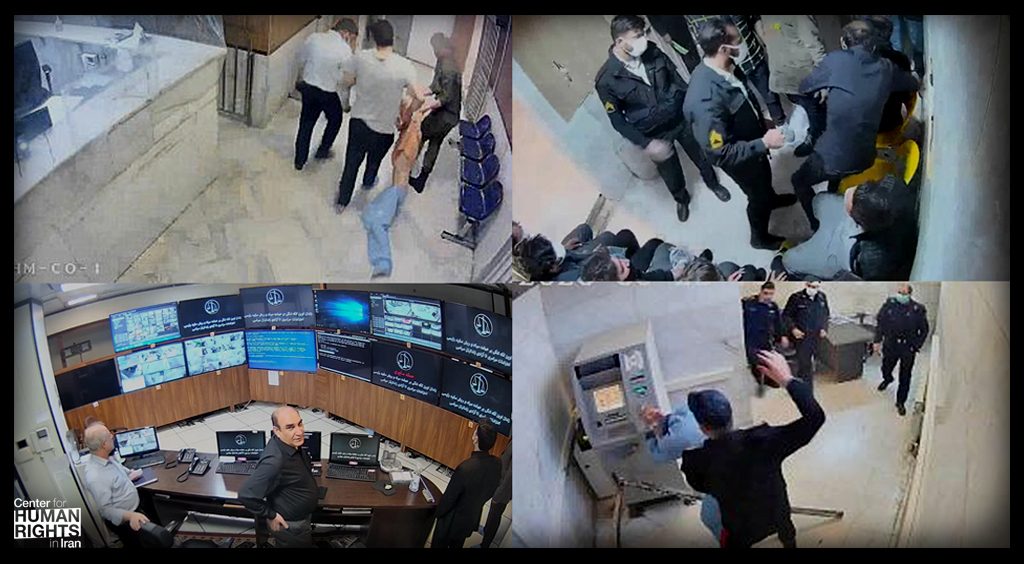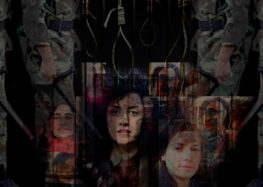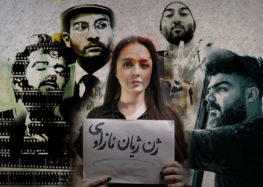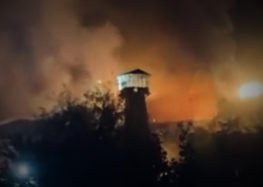Hacked Iranian Prison Footage Provides Limited Glimpse of Right of Abuses
 Hacked footage from security cameras in Iran’s Evin Prison and the publication of some of the prison’s documents published online by a group calling itself “Edalat-e Ali” (Ali’s Justice) has provided a glimpse into the systematic violence committed against prisoners there.
Hacked footage from security cameras in Iran’s Evin Prison and the publication of some of the prison’s documents published online by a group calling itself “Edalat-e Ali” (Ali’s Justice) has provided a glimpse into the systematic violence committed against prisoners there.
However, former inmates have noted that while the footage is revealing, it provides a severely limited glimpse into the extent of violence and mistreatment that they have endured and witnessed in the northern Tehran facility.
“What is shown in the videos in the form of torture, humiliation, and obvious physical abuse is only part of the visible reality of the torture committed against prisoners and their families in Iran,” said the statement.
“But there are other forms of torture that are not recorded on any camera. There is white torture—psychological and mental abuse of detainees in solitary confinement and interrogation rooms—and there are fathers, mothers, wives, and children getting more and more tired and worn-out from not seeing their loved ones and chasing cases through thousands of chaotic offices where there is no accountability…”
The conditions of lower profile and less-resourced prisons and detention centers in the country, especially in smaller cities, meanwhile remain hidden from the public.
The footage shows prison guards beating and mistreating inmates, attempted suicides without authorities intervening, and emaciated inmates being dragged by their arms and left in stairwells.
The head of Iran’s prisons, Mohammad Mehdi Haj Mohammadi tweeted on August 24, 2021, that he accepts “responsibility,” asks “forgiveness” from God, and said he would make an “effort” to prevent further mistreatment yet has yet to follow through on his pledge.
Since August 22, the hackers have published video clips, documents, and maps from Evin Prion on their channel on the Telegram messaging app.
The hacked imagery published so far show only parts of Evin Prison maintained by the judiciary’s security agents.
It does not reveal anything about the sections controlled by the state security establishment, including the Islamic Revolutionary Guard Corps (IRGC) Intelligence Organization (Ward 2-A) and the Ministry of Intelligence (wards 209 and 240).
In January 2019, unjustly imprisoned wildlife conservationist Niloufar Bayani revealed that she had been physically and psychologically tortured in Ward 2-A of Evin Prison in a formal complaint that was ignored by the judiciary.
“I was interrogated blindfolded while standing, spinning or sit-and-standing… threatened with the arrest and torture of my 70-year-old mother and father… threatened with physical torture by being shown images and descriptions of torture devices…heard hours of detailed descriptions about the suffering and pain caused by torture,” she wrote in a letter to then then-Judiciary Chief Sadegh Larijani.
“Every time I… sought help from the authorities, the pressures, threats, and acts of torture increased,” added Bayani, who worked as a consultant for the UN Environment Program between 2012-17.
After also being jailed in the IRGC’s Ward 2-A, British-Australian academic Kylie Moore-Gilbert wrote in lettersobtained by the Center for Human Rights in Iran (CHRI) that she had struggled to obtain proper food and medication, and had been denied contact with the outside world including her family.
The footage released thus far covers the period when current Iranian President Ebrahim Raisi was judiciary chief (March 2019-June 2021), during which at least three political prisoners, Sassan Niknafs, Alireza Shirmohammadali, and Behnam Mahjoubi, died as a result of negligence by prison and judiciary officials.
The State Prisons Organization and the judiciary chief to which it reports are responsible for prisoners’ safety, yet to date no one has been held accountable for the prisoners’ deaths.
Read this article in Persian.






